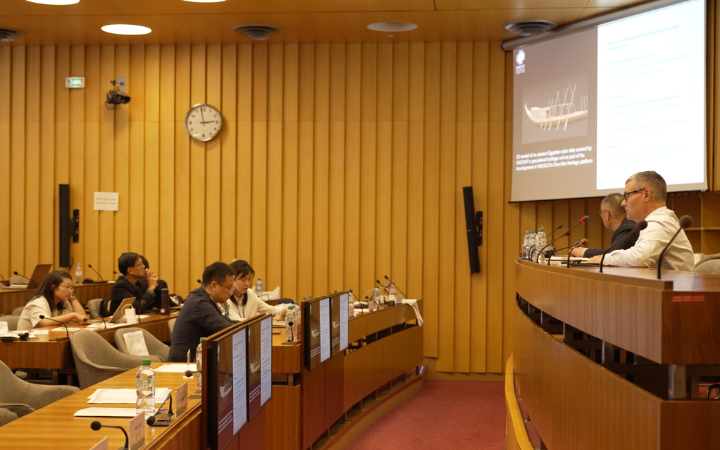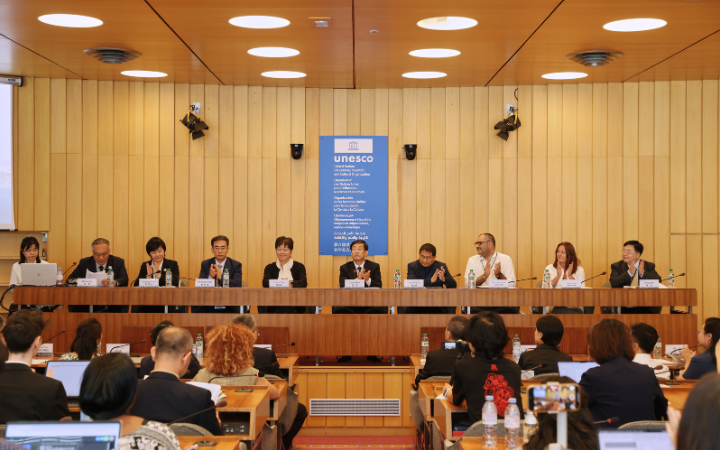24 July 2025, Paris, France - On 12 July 2025, the United Nations Satellite Centre (UNOSAT) took part in the 47th session of the World Heritage Committee at UNESCO Headquarters in Paris. In collaboration with the International Centre on Space Technologies for Natural and Cultural Heritage (HIST), UNOSAT co-hosted a thematic session titled: Digital Technologies for Sustainable Development of World Heritage Sites. This collaboration was part of a broader effort to promote the use of digital tools and geospatial technologies in support of UNESCO’s mission to safeguard World Heritage.
Geospatial Data to Support Cultural Heritage Protection
During the session, the United Nations Satellite Centre (UNOSAT) presented how geospatial data and digital technologies can strengthen the protection of cultural and natural heritage worldwide. UNOSAT monitors heritage sites through ongoing threats such as erosion, salinisation, looting, and natural hazards. It provides emergency mapping after disasters through activations of the Emergency Mapping Service and builds capacity among heritage professionals in Geographic Information Technology (GIT) through online and in-person training. GIT refers to a range of tools used to capture, store, analyse, and visualise spatial data, including Geographic Information Systems (GIS), Earth Observation (EO), remote sensing, and Global Navigation Satellite Systems (GNSS). By leveraging these technologies, UNOSAT enables informed, data-driven decision-making in support of initiatives such as UNESCO’s Dive into Heritage platform and contributes directly to the achievement of the Sustainable Development Goals — particularly SDG 11: Sustainable Cities and Communities.
Strengthening Partnerships
The event highlighted the long-standing partnership between UNOSAT and the International Centre on Space Technologies for Natural and Cultural Heritage (HIST), grounded in a shared commitment to advancing scientific research for cultural protection, supporting the implementation of the Sustainable Development Goals (SDGs), and strengthening local capacity for digital heritage management. Operating under a Memorandum of Understanding with UNESCO since 2015, UNOSAT is fully dedicated to satellite imagery analysis and capacity development. The collaborative side event also served as a platform to reaffirm the importance of digital innovation and international cooperation in safeguarding heritage.
Contact
Olivier VAN DAMME – Chief strategic Planning & Coordination Section / UNOSAT - olivier.vandamme@unitar.org



